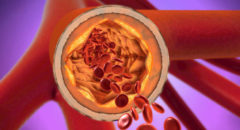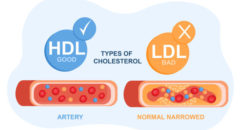
It may be challenging for busy people to make heart-healthy decisions. These easy swaps can be beneficial.
It might be challenging to prioritize heart health during busy days. Simply put, it seems like you don’t have time for routines that keep your ticker in tip-top shape, such as regular exercise, sufficient sleep, and a nutritious diet. To add a few extra steps to your daily tally, you can choose to park further away from a store or take the stairs whenever you can. What else can you do, though? These three activities may fit into your calendar.
Change Your Online Correspondence to a Face-to-Face Meeting
It’s acceptable if your primary method of communication with others is texting, emailing, using social media, or making Zoom calls. A scientific statement from the American Heart Association published in the Journal of the American Heart Association states that it is not acceptable if these approaches make you feel isolated or lonely, as these issues have been related to increased risks for heart disease, heart attack, or stroke.
Try to substitute some of your technological back-and-forths with individuals with in-person meetings to battle loneliness and isolation. Maybe you can make time in your schedule for a little lunch, coffee break, or stroll with a friend or coworker.
Spending time with people in person can help you feel more connected to them and less alone. Being physically present with others might make you feel more valued, more involved with them, and more likely to have a feeling of shared identity. All of these things can potentially make you feel less lonely. For this reason, some physicians are beginning to practice “social prescribing,” which includes advising patients to engage in volunteer work and other activities that foster face-to-face social interactions.
Better social connections may lower the likelihood of being diagnosed with depression or anxiety, according to a recent study by a team of Harvard researchers published in the International Journal of Public Health. Both have a link to heart disease or exacerbate pre-existing heart issues.
RELATED: 12 Weeks To A Heart-Healthy Lifestyle (Weekly Guide Inside!)
Replace a Subpar Breakfast with a Good One
Do you typically have a quick breakfast high in processed meat, refined (as opposed to whole) carbohydrates, saturated fat, and added sugar? Regular consumption of that type of food may increase weight, blood sugar, cholesterol, or calories, which are bad for your heart.
Instead, choose breakfast items high in fiber, a carbohydrate that either passes through the body undigested (insoluble fiber) or turns into a gel that coats the gut (soluble fiber).
Fiber not only aids with digestion, but it also:








